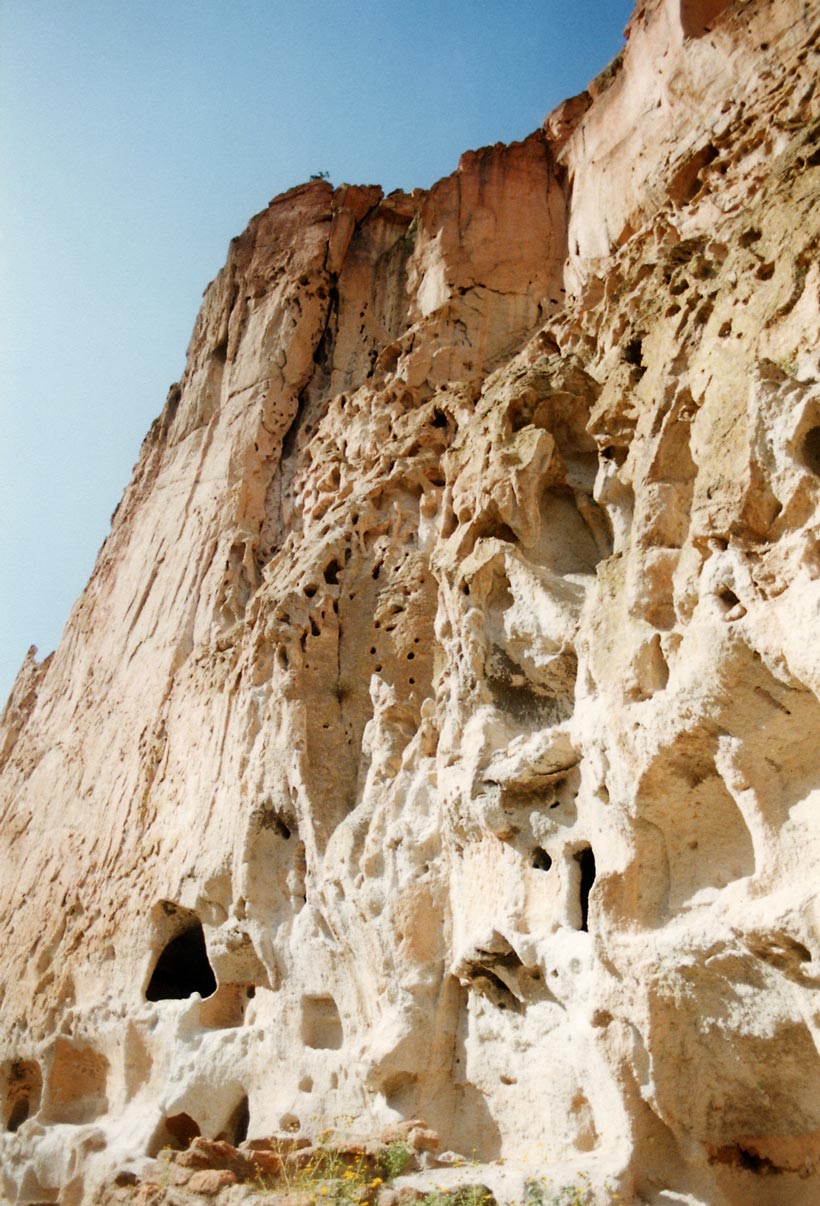|
Teton Dam
The Teton Dam was an earthen dam in the western United States, on the Teton River in eastern Idaho. It was built by the U.S. Bureau of Reclamation, one of eight federal agencies authorized to construct dams.Perrow, Charles. '' Normal Accidents''. New York: Basic Books, 1984. , pp. 233–238 Located between Fremont and Madison counties, it suffered a catastrophic failure on June 5, 1976, as it was filling for the first time. The collapse of Teton Dam killed 11 people and 16,000 livestock. The dam cost about $100 million to build and the federal government paid over $300 million in claims arising from its failure. Total damage estimates have ranged up to $2 billion, and the dam was not rebuilt. History and geology Interest in building a dam in the eastern Snake River Plain had arisen for many years to control spring runoff and provide a more constant water supply in the summer. The area had suffered a severe drought in 1961, followed by severe flooding in 1962. The Bureau o ... [...More Info...] [...Related Items...] OR: [Wikipedia] [Google] [Baidu] |
Teton River (Idaho)
The Teton River is a U.S. Geological Survey. National Hydrography Dataset high-resolution flowline dataThe National Map accessed May 4, 2011 tributary of the Henrys Fork of the Snake River in southeastern Idaho in the United States. It drains through the Teton Valley along the west side of the Teton Range along the Idaho-Wyoming border at the eastern end of the Snake River Plain. Its location along the western flank of the Tetons provides the river with more rainfall than many other rivers of the region. History At the time of the arrival of the Europeans to the region in the 1820s, the area was inhabited by the Shoshone and various related tribes. The lushness of the Teton Basin provided prime area for the fur trade, attracting many other tribes to region, including the Nez Perce, Flathead and the Gros Ventre. At the time, the basin was part of the disputed Oregon Country. The resulting friction between the trading groups led to recurring skirmishes in the basin. In 1832, a ... [...More Info...] [...Related Items...] OR: [Wikipedia] [Google] [Baidu] |
United States District Court For The District Of Idaho
The United States District Court for the District of Idaho (in case citations, D. Idaho) is the Federal district court whose jurisdiction comprises the state of Idaho (except for the part of the state within Yellowstone National Park, which is under the jurisdiction of the United States District Court for the District of Wyoming). Court is held in Boise, Coeur d'Alene, and Pocatello. Cases from the District of Idaho are appealed to the United States Court of Appeals for the Ninth Circuit (except for patent claims and claims against the U.S. government under the Tucker Act, which are appealed to the Federal Circuit). The United States Attorney's Office for the District of Idaho represents the United States in civil and criminal litigation in the court. , the U.S. attorney for the District of Idaho is Joshua Hurwit. History The District of Idaho was established shortly after Idaho's admission as a U.S. State. On July 3, 1890, by , the United States Congress organized Idaho as o ... [...More Info...] [...Related Items...] OR: [Wikipedia] [Google] [Baidu] |
Volcano
A volcano is commonly defined as a vent or fissure in the crust of a planetary-mass object, such as Earth, that allows hot lava, volcanic ash, and gases to escape from a magma chamber below the surface. On Earth, volcanoes are most often found where tectonic plates are diverging or converging, and because most of Earth's plate boundaries are underwater, most volcanoes are found underwater. For example, a mid-ocean ridge, such as the Mid-Atlantic Ridge, has volcanoes caused by divergent tectonic plates whereas the Pacific Ring of Fire has volcanoes caused by convergent tectonic plates. Volcanoes resulting from divergent tectonic activity are usually non-explosive whereas those resulting from convergent tectonic activity cause violent eruptions."Mid-ocean ridge tectonics, volcanism and geomorphology." Geology 26, no. 455 (2001): 458. https://macdonald.faculty.geol.ucsb.edu/papers/Macdonald%20Mid-Ocean%20Ridge%20Tectonics.pdf Volcanoes can also form where there is str ... [...More Info...] [...Related Items...] OR: [Wikipedia] [Google] [Baidu] |
Cenozoic
The Cenozoic Era ( ; ) is Earth's current geological era, representing the last 66million years of Earth's history. It is characterized by the dominance of mammals, insects, birds and angiosperms (flowering plants). It is the latest of three geological eras of the Phanerozoic Eon, preceded by the Mesozoic and Paleozoic. The Cenozoic started with the Cretaceous–Paleogene extinction event, when many species, including the non-avian dinosaurs, became extinct in an event attributed by most experts to the impact of a large asteroid or other celestial body, the Chicxulub impactor. The Cenozoic is also known as the Age of Mammals because the terrestrial animals that dominated both hemispheres were mammalsthe eutherians ( placentals) in the Northern Hemisphere and the metatherians (marsupials, now mainly restricted to Australia and to some extent South America) in the Southern Hemisphere. The extinction of many groups allowed mammals and birds to greatly diversify so that large m ... [...More Info...] [...Related Items...] OR: [Wikipedia] [Google] [Baidu] |
Huckleberry Ridge Tuff
The Huckleberry Ridge Tuff is a tuff formation created by the Huckleberry Ridge eruption that formed the Island Park Caldera that lies partially in Yellowstone National Park, Wyoming and stretches westward into Idaho into a region known as Island Park. This eruption of of material is thought to be one of the largest known eruptions in the Yellowstone hotspot's history. This eruption, 2.1 million years ago, is the third most recent large caldera-forming eruption from the Yellowstone hotspot. It was followed by the Mesa Falls Tuff and the Lava Creek Tuff eruptions. The eruption likely occurred in 3 phases, separated by decades. See also *Yellowstone Caldera The Yellowstone Caldera, also known as the Yellowstone Plateau Volcanic Field, is a Quaternary caldera complex and volcanic plateau spanning parts of Wyoming, Idaho, and Montana. It is driven by the Yellowstone hotspot and is largely within Yel ... * Snake River Plain * Island Park Caldera * Henry's Fork Caldera Refe ... [...More Info...] [...Related Items...] OR: [Wikipedia] [Google] [Baidu] |
Ignimbrite
Ignimbrite is a type of volcanic rock, consisting of hardened tuff. Ignimbrites form from the deposits of pyroclastic flows, which are a hot suspension of particles and gases flowing rapidly from a volcano, driven by being denser than the surrounding atmosphere. New Zealand geologist Patrick Marshall (1869–1950) coined the term ''ignimbrite'' from the Latin ''igni-'' [fire] and ''imbri-'' [rain]. Ignimbrites are made of a very poorly sorted mixture of volcanic ash (or tuff when Lithification, lithified) and pumice lapilli, commonly with scattered lithic fragments. The ash is composed of glass shards and crystal fragments. Ignimbrites may be loose and unconsolidated, or lithified (solidified) rock called lapilli tuff. Near the volcanic source, ignimbrites often contain thick accumulations of lithic blocks, and distally, many show meter-thick accumulations of rounded cobbles of pumice. Ignimbrites may be white, grey, pink, beige, brown, or black depending on their composition and ... [...More Info...] [...Related Items...] OR: [Wikipedia] [Google] [Baidu] |
Tuff
Tuff is a type of rock made of volcanic ash ejected from a vent during a volcanic eruption. Following ejection and deposition, the ash is lithified into a solid rock. Rock that contains greater than 75% ash is considered tuff, while rock containing 25% to 75% ash is described as ''tuffaceous'' (for example, ''tuffaceous sandstone''). A pyroclastic rock containing 25–75% volcanic bombs or volcanic blocks is called tuff breccia. Tuff composed of sandy volcanic material can be referred to as volcanic sandstone. Tuff is a relatively soft rock, so it has been used for construction since ancient times. Because it is common in Italy, the Romans used it often for construction. The Rapa Nui people used it to make most of the ''moai'' statues on Easter Island. Tuff can be classified as either igneous or sedimentary rock. It is usually studied in the context of igneous petrology, although it is sometimes described using sedimentological terms. Tuff is often erroneously called t ... [...More Info...] [...Related Items...] OR: [Wikipedia] [Google] [Baidu] |
Volcanic Ash
Volcanic ash consists of fragments of rock, mineral crystals, and volcanic glass, produced during volcanic eruptions and measuring less than 2 mm (0.079 inches) in diameter. The term volcanic ash is also often loosely used to refer to all explosive eruption products (correctly referred to as '' tephra''), including particles larger than 2 mm. Volcanic ash is formed during explosive volcanic eruptions when dissolved gases in magma expand and escape violently into the atmosphere. The force of the gases shatters the magma and propels it into the atmosphere where it solidifies into fragments of volcanic rock and glass. Ash is also produced when magma comes into contact with water during phreatomagmatic eruptions, causing the water to explosively flash to steam leading to shattering of magma. Once in the air, ash is transported by wind up to thousands of kilometres away. Due to its wide dispersal, ash can have a number of impacts on society, including animal a ... [...More Info...] [...Related Items...] OR: [Wikipedia] [Google] [Baidu] |
Rhyolite
Rhyolite ( ) is the most silica-rich of volcanic rocks. It is generally glassy or fine-grained (aphanitic) in texture (geology), texture, but may be porphyritic, containing larger mineral crystals (phenocrysts) in an otherwise fine-grained matrix (geology), groundmass. The mineral assemblage is predominantly quartz, sanidine, and plagioclase. It is the extrusive equivalent of granite. Its high silica content makes rhyolitic magma extremely viscosity, viscous. This favors explosive eruptions over effusive eruptions, so this type of magma is more often erupted as pyroclastic rock than as lava flows. Rhyolitic ash-flow tuffs are among the most voluminous of continental igneous rock formations. Rhyolitic tuff has been used extensively for construction. Obsidian, which is rhyolitic volcanic glass, has been used for tools from prehistoric times to the present day because it can be shaped to an extremely sharp edge. Rhyolitic pumice finds use as an abrasive, in concrete, and as a soil ... [...More Info...] [...Related Items...] OR: [Wikipedia] [Google] [Baidu] |
Shield Volcano
A shield volcano is a type of volcano named for its low profile, resembling a shield lying on the ground. It is formed by the eruption of highly fluid (low viscosity) lava, which travels farther and forms thinner flows than the more viscous lava erupted from a stratovolcano. Repeated eruptions result in the steady accumulation of broad sheets of lava, building up the shield volcano's distinctive form. Shield volcanoes are found wherever fluid, low-silica lava reaches the surface of a rocky planet. However, they are most characteristic of ocean Volcanic island, island volcanism associated with Hotspot (geology), hot spots or with Rift, continental rift volcanism. They include the largest active volcanoes on Earth, such as Mauna Loa. Giant shield volcanoes are found on other planets of the Solar System, including Olympus Mons on Mars and Sapas Mons on Venus. Etymology The term 'shield volcano' is taken from the German term ''Schildvulkan'', coined by the Austrian geologist Eduar ... [...More Info...] [...Related Items...] OR: [Wikipedia] [Google] [Baidu] |
Basalt
Basalt (; ) is an aphanite, aphanitic (fine-grained) extrusive igneous rock formed from the rapid cooling of low-viscosity lava rich in magnesium and iron (mafic lava) exposed at or very near the planetary surface, surface of a terrestrial planet, rocky planet or natural satellite, moon. More than 90% of all volcanic rock on Earth is basalt. Rapid-cooling, fine-grained basalt is chemically equivalent to slow-cooling, coarse-grained gabbro. The eruption of basalt lava is observed by geologists at about 20 volcanoes per year. Basalt is also an important rock type on other planetary bodies in the Solar System. For example, the bulk of the plains of volcanism on Venus, Venus, which cover ~80% of the surface, are basaltic; the lunar mare, lunar maria are plains of flood-basaltic lava flows; and basalt is a common rock on the surface of Mars. Molten basalt lava has a low viscosity due to its relatively low silica content (between 45% and 52%), resulting in rapidly moving lava flo ... [...More Info...] [...Related Items...] OR: [Wikipedia] [Google] [Baidu] |
Omaha, Nebraska
Omaha ( ) is the List of cities in Nebraska, most populous city in the U.S. state of Nebraska. It is located in the Midwestern United States along the Missouri River, about north of the mouth of the Platte River. The nation's List of United States cities by population, 41st-most-populous city, Omaha had a population of 486,051 at the 2020 United States census, 2020 census. The eight-county Omaha–Council Bluffs metropolitan area, which extends into Iowa, has approximately 1 million residents and is the Metropolitan statistical area#United States, 55th-largest metro area in the United States. Omaha is the county seat of Douglas County, Nebraska, Douglas County. Omaha's pioneer period began in 1854, when the city was founded by speculators from neighboring Council Bluffs, Iowa. The city was founded along the Missouri River, and a crossing called Lone Tree Ferry earned the city its nickname, the "Gateway to the West". Omaha introduced this new West to the world in 1898, when it ... [...More Info...] [...Related Items...] OR: [Wikipedia] [Google] [Baidu] |









